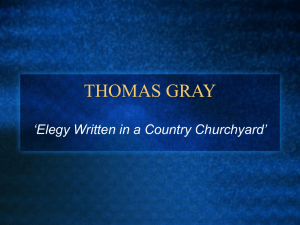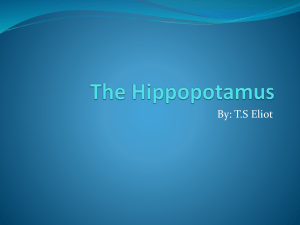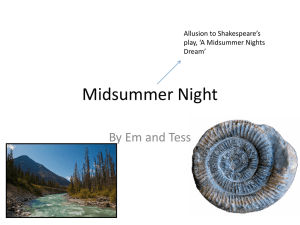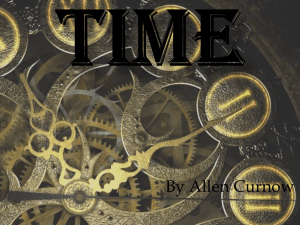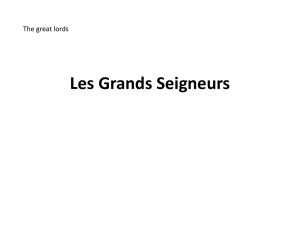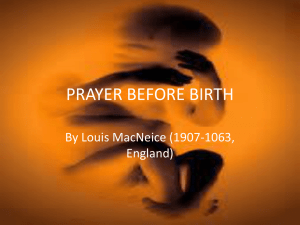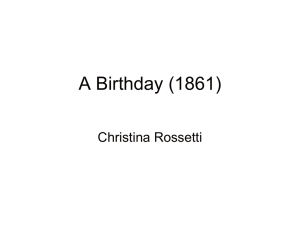Sentimentalism and Thomas Gray
advertisement
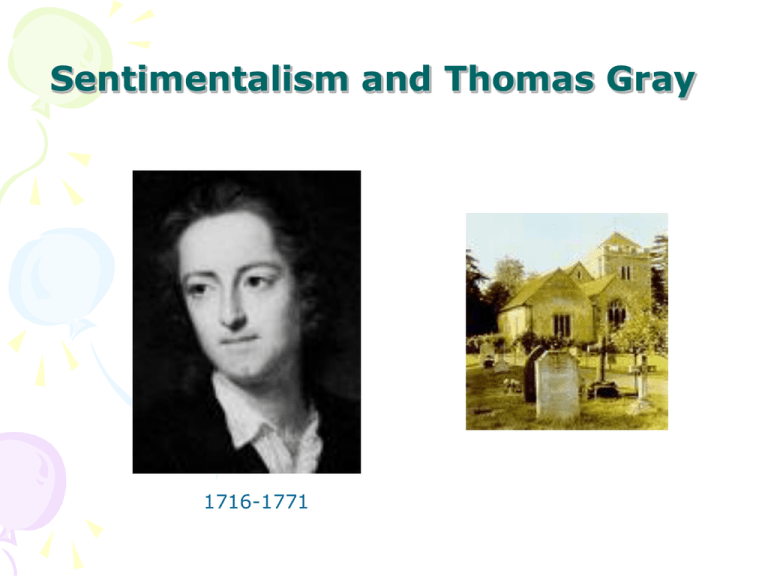
Sentimentalism and Thomas Gray 1716-1771 Sentimentalism • In the middle of the 18th century, sentimentalism gradually made its appearance. • Sentimentalism came into being as the result of a bitter discontent among the enlightened people with social reality. The sentimentalists continued to struggle against feudalism, but they sensed at the same time the contradictions in the process of capitalist development. Dissatisfied with reason, sentimentalists appealed to sentiment to the human heart. They turned to the countryside for its material, and showed great sympathy for the poverty. • It marked the midway in the transition from Classicism to Romanticism in English poetry. Thomas Gray’s features and themes • Thomas Gray is the representative figure of sentimentalists. With a classical precision and polish, the poet shows a keen interest in the English countryside and a sincere feeling of the life of common people. Nature is his greatest concern. Each natural object, either directly of by contrast, reflects the mood of man. Analysis of Elegy Written in a Country Churchyard • It is regarded as Gray’s best and most representative work. The poem is the outcome of about eight years’ careful composition and polish. It is more or less connected with the melancholy event of the death of Richard West, Gray’s intimate friend. In this poem, Gray reflects in death, the sorrows of life, and the mysteries of human life with a touch of his personal melancholy. • Form: iambic pentameter quatrains rhymed abab In form, it has the ordered, balanced phrasing and rational sentiments of Neoclassical poetry; in tone and mood, it tends toward the emotionalism and individualism of the Romantic poets. • Detailed study of the poem (diction, sound effects, imagery, figures of speech) Stanza 1 • Curfew: bell to announce the coming of night • Tolls the knell of parting day: announces the end of a day • Lowing herd: mooing herd of oxen • Lea: meadow, pasture • Death images: Knell/ lowing herd/ weary plowman/ darkness • What is the tone of the first stanza? How does the poet make it? • Long vowels and diphthongs (function); personification Stanza 2 • Wheels droning flight: flies in circles while making a droning sound • Drowsy tinkling: sounds of the bell hung under the neck of the cattle which have a drowsy effect on the listeners. • Lull the distant folds: cause sheep to sleep or rest in a sheltered corner of a field where they are surrounded by a fence or wall for protection. • Tone and sound effect (evening, stillenese contrast with droning flight, drowsy tinklings) Stanza 3 • Ivy-mantled tower:the clock tower of the church whose outside walls are • overgrown with ivy. • The moping owl: the owl that gives harsh, unpleasant sounds, thus making people sad. • Molest: disturb and interrupt • The quiet countryside was broken by others. • The speaker shifts his view from the natural descriptions to the graveyard. Stanza 4 • • • • • Rugged: large and rough Heave: rise and fall Turf: disordered grass Mouldering: decaying This stanza begins to introduce the graves of the poor people. (turf heaves, narrow cell, rude forefathers) Stanza 5 • Beautiful scenery in the countryside in the past. • Tactile image, the visual image and auditory image (the breezy call of, swallow twittering, cock’s shrill clarion, etc) • No more shall rouse them from their lowly bed. (back to the theme, bed-grave, death-sleep) Stanza 6 and 7 (recall the past days) • Family happiness (家庭之乐)/ Their hard-working scenes in their living life • The blazing hearth (炉火) shall not burn any longer, the housewife shall not be busy with the evening housework; children will not greet father’s return, and climb their knees to share the kiss. • The farming scenes in their lifetime • This stanza obviously strengthened the tone of melancholy. Stanza 8 • A comparison between the death of great people and common people (Ambition and Grandeur) • Everybody is doomed to death. Before death, all the people are equal. There is no distinction of class
